Echos of uncertainty in the post-covid era
High inflation, record employee turnover, and shifting worker preferences mark the uneven footing of our post-pandemic economy.
These factors amplify an already too familiar problem for inside sales leaders: retaining talent in a profession defined by its challenging nature and high turnover.
To understand these phenomena and their impact on the business community, we surveyed 260 sales development representatives (SDRs) for their frontline perspective on the state of hiring and talent development in the sales profession. To contextualize our findings, we conducted in-depth interviews with notable sales development experts who discussed their experience developing sales talent from the management end of the hiring spectrum.
Our sample includes respondents from businesses of all sizes and represents a broad range of industries. The subsequent analysis outlines the state of sales talent development and offers hints about what may come next for sales professionals. Read on for our findings.
The State of the U.S. Labor Market
Against the backdrop of record-low unemployment and persistent inflation, today’s unusual hiring conditions have left businesses perplexed and stymied.
Adding to the confusion are opposing headlines sending contradictory messages about the state of the economy. Massive tech layoffs totaling in the tens of thousands are contrasted by strong job growth. The Bureau of Labor Statistics reported employers added 517,000 jobs in January 2023 — the strongest gain in six months. Moreover, the unemployment rate has reached a 70-year low at just 3.4%.
Further complicating this already busy picture, the U.S. inflation rate hit a 40-year high in 2022, raising concerns about an impending economic slowdown.
Despite the dichotomy, many business leaders aren’t experiencing a slowdown on the ground (at least, not when it comes to the labor market). The higher-than-average inflation and historically low unemployment rate have fostered an atmosphere that encourages U.S. workers to look for new employers.
Indeed, staying with your current employer may seem like a step backward when companies desperate for talent are offering larger salaries and more perks. The grass has officially become greener on the other side, and workers aren’t hesitating to jump the fence.
Our sample confirmed the sales development space isn’t immune to these realities. Nearly half (49.6%) of SDRs surveyed said they had considered seeking new employment in the previous six months.
Although these conditions have brought much-needed wage gains to the middle class, they’ve also produced an unprecedented challenge for sales leaders whose success depends on their ability to recruit, retain, and develop sales talent on their teams.
The SDR position is already known for long ramp times, high turnover, and a worker base consisting largely of entry-level sales professionals and recent college graduates; to thrive in this environment, sales development leaders must find ways to mitigate economic headwinds and successfully fight turnover at their organization.
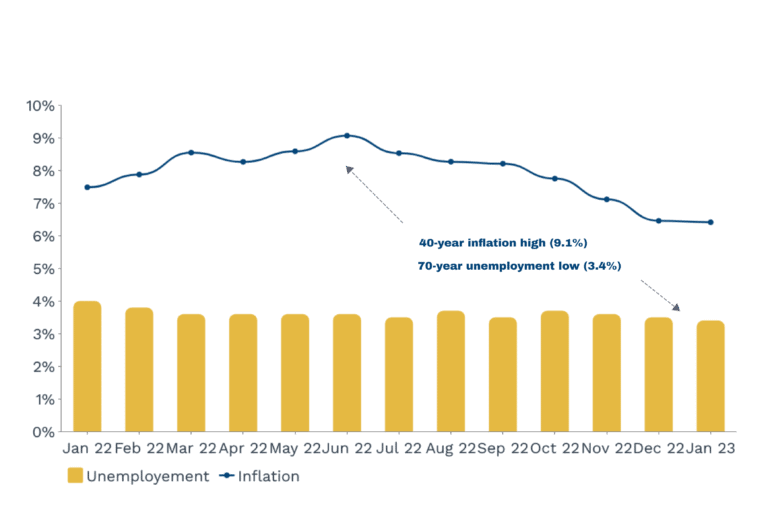
Inflation and unemployment
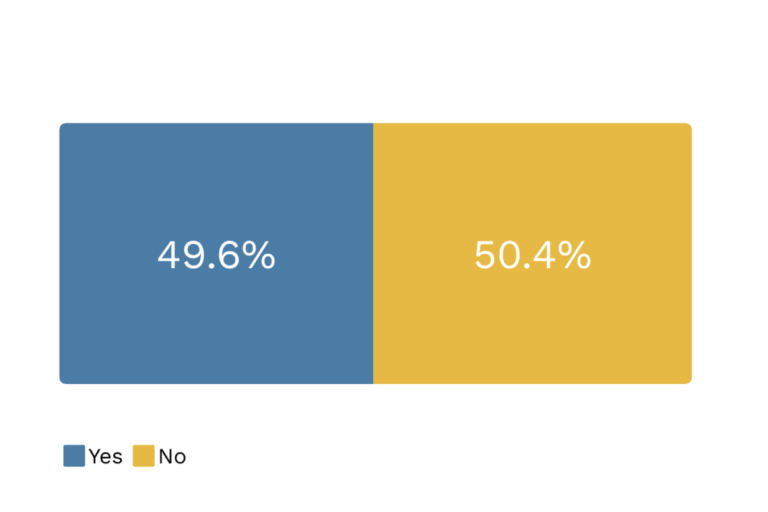
Have you considered seeking a new employer in the past six months?
The Management Factor
It’s widely known that managers have an outsized impact on employee happiness, performance, and, in turn, their retention.
To test this assertion, we asked our respondents whether they agree or disagree with various statements regarding their working conditions. Of the reps who at least somewhat agree their manager provides adequate support, a resounding 87.8% report they also feel happy at work. Meanwhile, only 6.3% of reps who say their managers don’t support them enough make similar claims, underscoring the veracity of this relationship.
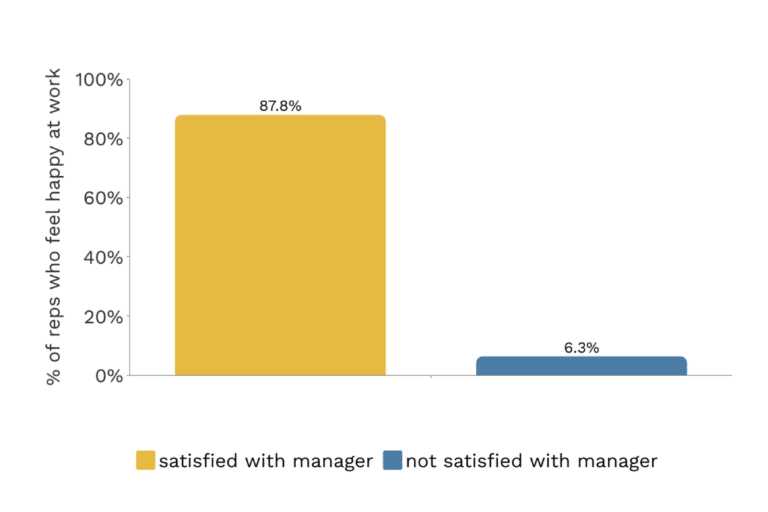
Happiness at work and satisfaction with management
We developed a hypothesis that SDRs who feel supported by their manager are not only happier but also more likely to stay with their company. In an attempt to confirm this belief, we inspected the relationship between managerial support and job-seeking behavior.
Interestingly, 42% of those who felt at least somewhat supported still considered leaving for another job – indicating that good management relations can’t completely prevent turnover. However, the percentage of reps considering new opportunities leaped to 93.1% when looking only at those who indicated dissatisfaction with the amount of managerial support they received.
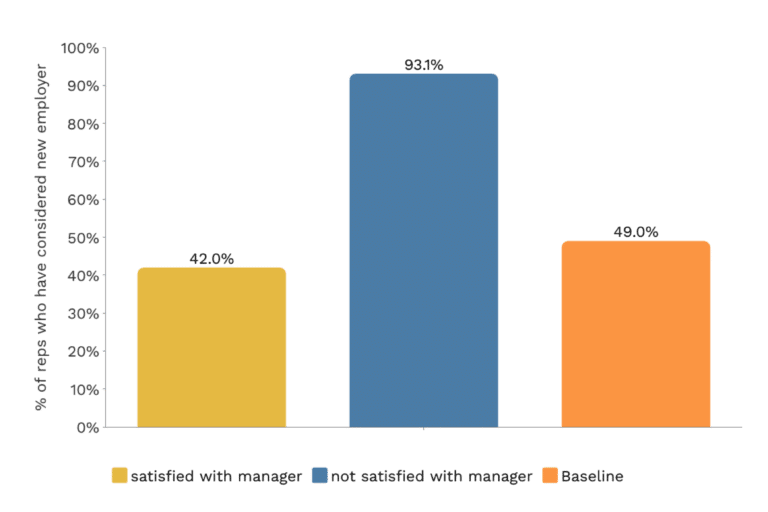
Considering new employer and satisfaction with management
In other words, SDRs who said they were unhappy with the support their managers offered were more than twice as likely to look for a new job. For a position with an average tenure of just 17 months (Bridge Group), retention is a critical factor that drives team performance.
When we analyzed our sample, we found the median experience for a rep reporting 75% quota attainment was 36 months, compared to a median experience of 10 months for reps reporting an average 50% quota attainment.
This data illustrates the direct impact managers have on the employee experience and how negligence too often reinforces low performance.
Despite this clear and alarming connection, the good news is most SDRs consider themselves well equipped to do their best work. In fact, 79.9% of our respondents believe they receive enough support from their managers, and only 17.4% report feeling micromanaged.
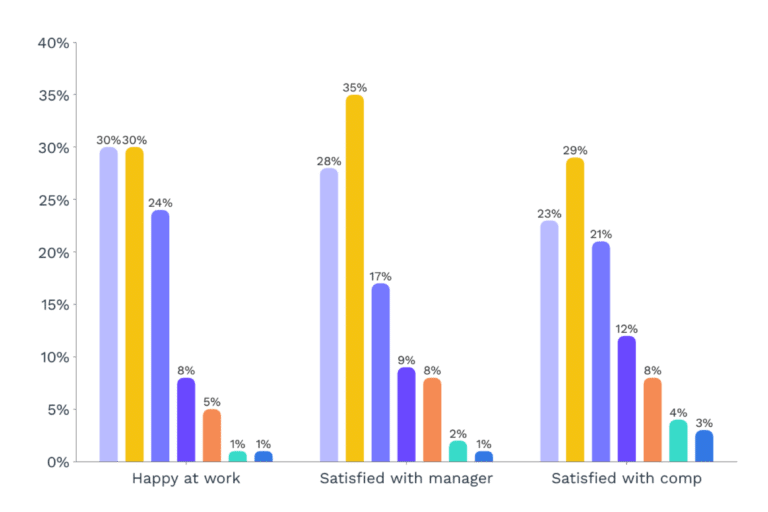
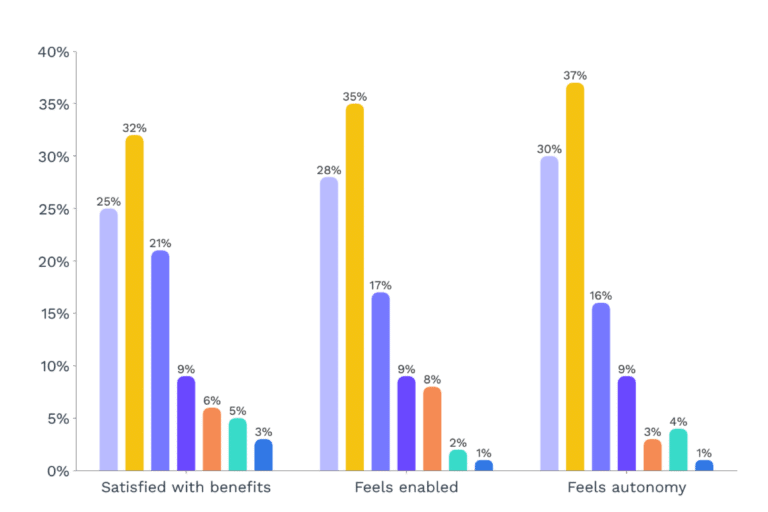

Interestingly, when considering the relationship between the number of coaching hours an SDR receives and their reported satisfaction with management, we observed no such correlation.
The seemingly contradictory outcomes from this survey raise the question: If an investment in coaching doesn’t correlate to strong SDR-manager relationships, how can a sales development manager help their reps feel enabled? According to the experts we interviewed, the answer may depend on how you define (and apply) the concepts of management and coaching.
"That’s why people stay at companies … you’re involved with their lives as an employee and as a person."
Tom Stearns
“Coaching is one component of the managing relationship,” explained Tom Stearns, a sales coach who works with SDRs as an outside consultant. “But managers also need to support their reps up the ladder.”
Tom offered a few scenarios to highlight the type of support managers can extend to their SDRs, such as ensuring fair compensation practices, supporting the SDR-AE handoff, being flexible during tough, personal times, and recognizing their reps’ efforts in front of senior leadership. “That’s why people stay at companies … you’re involved with their lives as an employee and as a person.”
By clarifying that managerial support entails more than intensive coaching hours, Tom drew attention to the need for sales managers to support both their reps’ careers and their personal ambitions.
While there’s little doubt that high-quality support from management is indispensable for talent retention and team performance, the tall task of providing both coaching and support still poses an obstacle for sales development managers.
Interview with Darryl Praill
Darryl is an award-winning content creator, acclaimed marketing expert, and aspiring joke teller. He currently serves as CMO at AgoraPulse, a social media scheduling platform.
This section has been lightly edited for brevity.
Playlist
Q: How do you hold reps accountable to quota while giving them room to develop?
A: You need to offer reps a pathway to advance their career. Most companies have no such game plan. If you have attrition it is because SDRs are promised a promotion to AE — and it never happens. They [the SDR] have no roadmap, they have no way to measure [their progress], and then they lose faith.
Q: Our sample found that 48% of SDRs have considered starting a new career in the past six months. What do you think about that number?
A: You need to take a very logical understanding of your sales cycle. The first month is entirely learning, so I give my reps 100% commission as if they’re on plan. Month two, they receive two-thirds commission, and month three, I’m going to give them one-third commission. By month four, the rep has a real chance to close opportunities in their pipeline. Your reps have to feed their families. So, you’ve got to equip them and motivate them to want to stick around and see the upside.
Q: What do business leaders fail to understand about turnover?
A: Investments made in sales are made with an expectation of ROI. The downside of that is that we’re only viewing sales from a corporate point of view. For you to have true sales success, to have a winning culture, a high-performing team, you need to look at the ROI for your individual reps. It’s got to be a two-way commitment. If you can’t articulate what your reps stand to gain by working with you, you’re already in a losing position.
The Turnover Problem
As workers come under pressure from inflation and an avalanche of new opportunities reach the job market, companies struggle to maintain a stable sales force. Consistent with our findings, it’s estimated that 50.5 million Americans abandoned their jobs in 2022, the highest number ever recorded (CNBC).
In the sales development industry, this movement has echoed with particular vibrance across entry-level positions, leading SDRs to flirt constantly with the idea of seeking a new job — and the new income that comes with it.
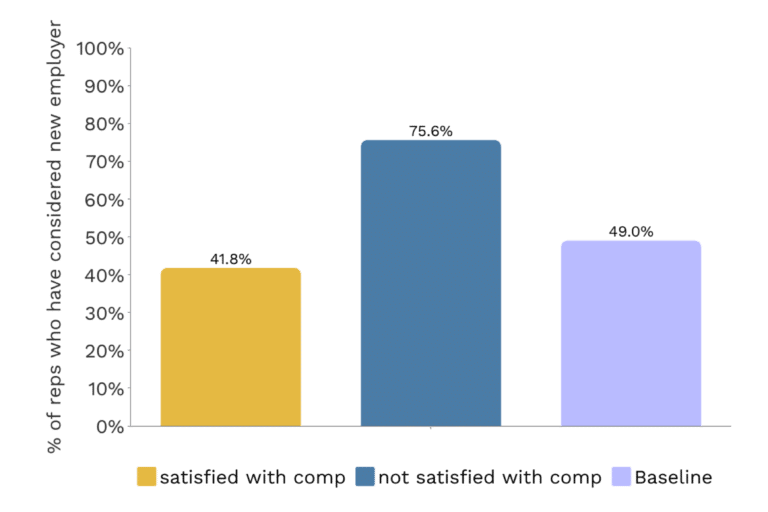
Considering new employer and satisfaction with compensation
Our analysis sheds light on this relationship: Excluding feelings regarding managerial support, the strongest correlating factor for reps considering different employers was satisfaction with compensation.
Of those at least somewhat satisfied with their compensation, just 41.8% had considered seeking a new employer — 7% lower than our sample as a whole.
This is nearly half the rate of those dissatisfied with their base compensation, of which 75.6% said they had considered looking for a new job over the past six months.
Given that SDR compensation is based on performance (our sample reported an average 34.5% variable compensation), these factors paint a clear picture of the live-or-die role sales development managers assume.
In a way, this feedback loop is intuitive and unlikely to surprise most sales development managers: If an SDR expresses a lack of support from their manager, it’s unlikely they’re receiving the coaching they need to hit their quota. If an SDR fails to hit quota, they’re unlikely to be satisfied with their compensation.
“I don’t think any sales leader is surprised by the relationship between management, quota attainment, and retention,” said SalesRoads President David Kreiger. “What’s surprising is the strength of this relationship. A bad manager can make a turnover problem twice as bad. It really is throwing fuel on the fire,” he surmised.
This relationship is complicated by a sales development landscape scarred from the knock-on effects of COVID. One such problem is reduced SDR output across industries.
Although not directly measured in our sample, none of the sales leaders we interviewed asserted that SDR performance remained stable through COVID. “I think about this a lot,” said Tom Stearns, “It used to be 20 meetings a month, and now 10 meetings is where we’re at.”
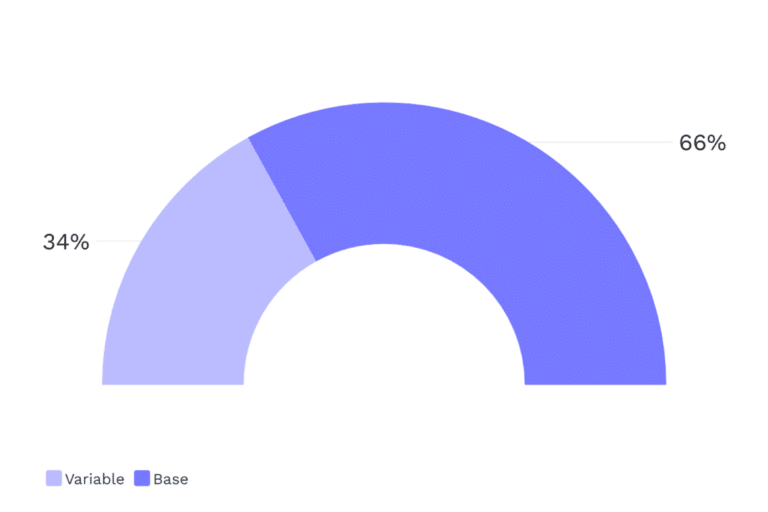
Compensation breakdown: variable vs base
"Employers that historically had performance expectations lowered or got rid of them."
Steve Richard
From the perspective of business leaders, however, adjusting quotas to match reps’ declining performance may bring a whole different set of problems.
“Employers that historically used to have performance expectations lowered them or got rid of them,” affirmed Steve Richard, SVP of Sales Excellence at Mediafly. “And when companies lowered their performance expectations, they stopped firing people.”
Although Steve contends organizations are undercutting themselves with low quota expectations, it highlights the bind sales leaders find themselves in. Raising quota expectations risks a spike in employees seeking other opportunities. This is especially true if managers fail to support their reps by advocating for reasonable quotas on the back end.
However, companies are unlikely to give raises to SDRs who barely cover output expectations. On a macro scale, this could indicate that reps are leaving employers because they don’t see a pathway to higher income at their current position.
“If your historical trend is at $2,000 a month, a $5,000 a month quota is never going to be hit … after months and months and months of never hitting a 5k quota, they leave because they can’t live on that,” quipped Darryl Praill, CMO at AgoraPulse. “That’s why you have the attrition. The number has to be realistic.”
Outside of the SDR-manager relationship and compensation, organizations may be hard pressed to solve the turnover issue, although some levers do exist. When we asked SDRs who had considered quitting in the previous six months what they would improve about their current jobs, their top responses were base compensation (30.2%), flexible hours (21.7%), and maximum earning potential (15.5%).
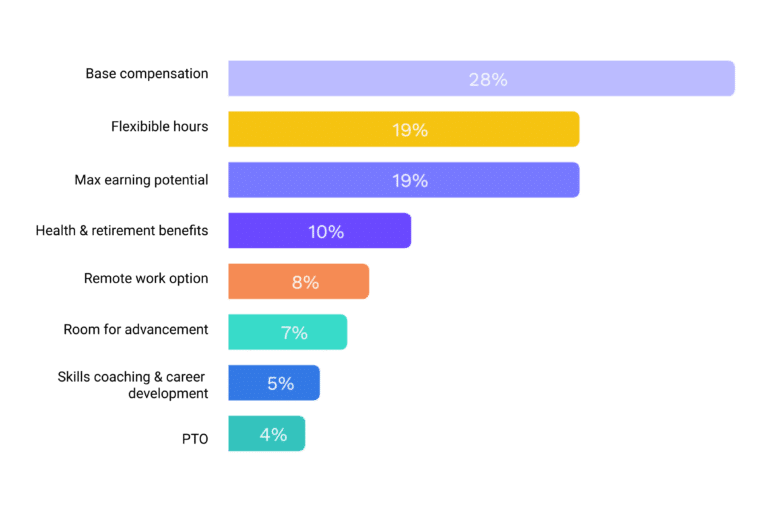
If you could change one thing about your job, what would it be?
In particular, flexibile work hours and location stand out as potential benefits companies could offer to preemptively combat turnover. Similarly, creating a clear career path that details how SDRs can grow their experience and move up the ladder is a realistic option for improving retention.
“When you look at these factors in aggregate, it’s clear that sales development managers are indispensable players in solving the turnover issue. 2023 is the year for sales development managers to shine,” David Krieger said.
Interview with Steve Richard
Steve is a serial entrepreneur with a focus on sales development solutions. Steve has sold multiple companies including ExecVision, a conversation intelligence platform. He currently serves as SVP of Sales Excellence at MediaFly.
This section has been lightly edited for brevity.
Playlist
Q: What would you say is the biggest challenge in training SDRs?
A: The biggest challenge is reinforcing the training and coaching them in a way that makes them actually use what they learned. The SDRs’ job is much more complicated than people realize. For them to succeed, it’s important to have consistency in the reinforcement.
Q: How much coaching is necessary for an SDR to succeed?
A: One hour per rep per week, or three to five hours per rep per month.
Q: What are the biggest mistakes that SDRs make on a daily basis?
A: The biggest mistake they make is forgetting they’re actually trying to schedule meetings with human beings. They are not just a name on a list. One of the things I do in my training programs is to teach them what is called “3X3 Research,” which is finding three points about the company, contact, or department through three minutes of research.
Q: How can organizations improve SDR retention?
A: Mentorship programs and career paths. A lot of companies have a career path that is not well documented. Companies need to have better career paths and need to be able to show SDRs examples of successful people who were reps and advanced their careers. I’ve seen successful SDRs grow into marketing, product or even finance. The SDR job is a great first role to really learn the buyer and solutions.
The Neglect of Coaching Culture
Much of this report has focused on the importance of healthy manager-SDR relationships. However, the better understood element for improving performance and retention is skill development.
Rising tides lift all boats, and skill development is no exception. Properly executed skill development can strengthen the employee-manager relationship, improve quota attainment, increase take-home pay, and, ultimately, drive better retention of high performers.
Nearly all the leaders we spoke with recognized the importance of skill development. Yet, those same leaders agreed this is an area many businesses can improve upon. The good news is skill development doesn’t have to be time intensive.
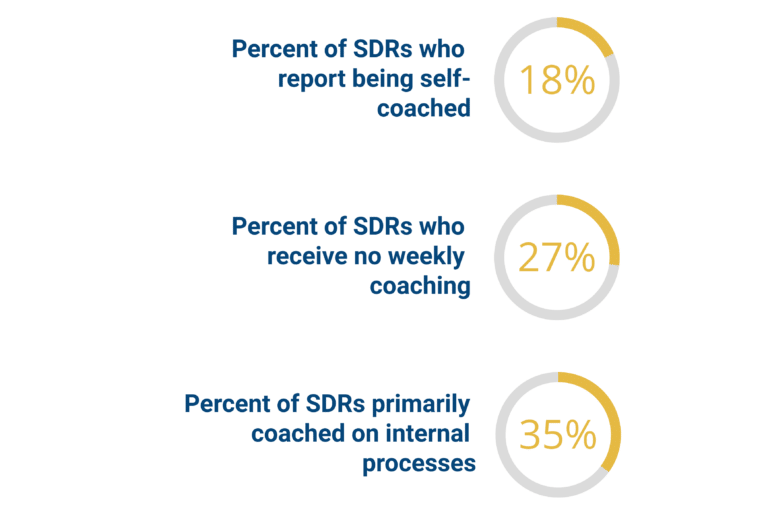
As Steve Richard said in our interview, companies should dedicate “one hour per rep per week, or three to five hours per rep per month.”
Unfortunately, despite these achievable targets, over a quarter (26.9%) of our sample indicated they don’t receive any coaching on a weekly basis. When asked separately if they’re self-coached, 18.1% of our sample replied in the affirmative.
Organizations that are confident in the number of coaching hours their reps receive could still benefit from a review of their coaching practices, however.
When asked to rank which focus areas receive the most coaching attention from their managers, our respondents overwhelmingly said internal processes are the main focus for sales managers, followed by research skills, then phone and writing skills.
“It should be the exact opposite,” said Steve Richard, pointing to the lack of sales skills training as a major liability for organizations. “Sales skills and the buyer should be number one. And then it should be internal processes.”
The misplaced coaching emphasis may result from a number of factors including high turnover, which could be forcing managers to spend time explaining process over building skills as a matter of necessity. The misplaced emphasis could also be a result of who is coaching.
Tom suggested the problem may stem from a lack of intent about who is moved to management. Oftentimes, the offending party is an ambitious SDR who may not understand the nuances of coaching. “There are often reps [who think], ‘I want to be a VP, I want to be a manager.’ But they just want that because they think it’s a promotion … Do they really know how to be coaches themselves? Some companies have managers [who] don’t.”
Our data reflected Tom’s observation: When asked who is responsible for their coaching, 56.2% of reps indicated it was their direct manager, with another 20.7% pointing to a dedicated coach.
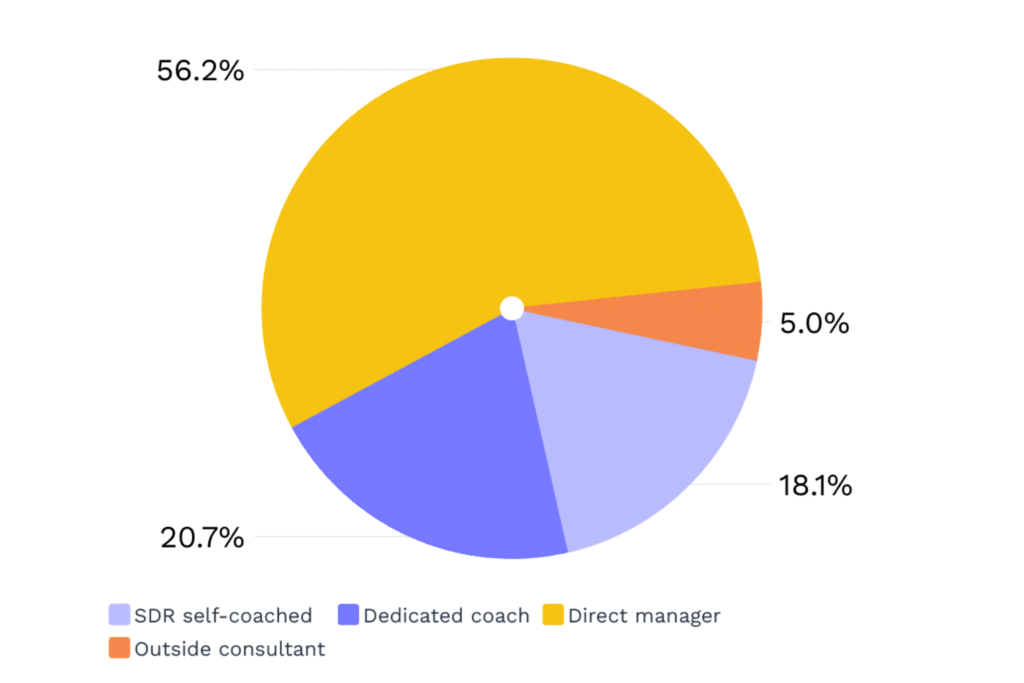
Function of SDR Coaches
The most common mistake organizations make with their coaching, said Tom Stearns, “is a lack of internal knowledge on how to do it properly.” It’s unintentional, he continued, “But they don’t know the best way to make a cold call or how to do the research — really, the mechanics of it.”
Tom reiterated the best managers are people focused and drive value from helping others grow. That doesn’t mean other skill sets lack value; it’s simply that organizations need to place their people intentionally in positions to excel.
"Do they really know how to be coaches themselves? Some companies have managers who don't"
Tom Stearns
To build a winning culture, companies need to help their future leaders self-identify where they find joy and where they have the skills to succeed. Organizations shouldn’t rely on quota attainment to determine who’s promoted — a common mistake that strips teams of top performers and places them in management positions they may ultimately fail to execute properly.
By placing future leaders into positions that match both company and employee needs, “you can start to create an ecosystem where it rewards and supports the activities of the whole culture,” concluded Tom Stearns.
Playlist
Interview with Tom Stearns
Tom is a sales strategist, skateboard enthusiast, and chapter president of AA-ISP. He helps clients build high-output sales teams through hands-on coaching and implementation.
This section has been lightly edited for brevity.
Q: What would you say is the biggest challenge in training SDRs?
A: I think it’s a lack of internal knowledge. There’s a very minimal understanding of the level of sophistication and discipline that must go into training. I see companies with bad commission plans, companies that drive only for activity, and companies that set the bar too low. There’s a misunderstanding of how to do things.
Q: We've heard from sales leaders that SDR performance has decreased since the beginning of the pandemic. Do you feel that with your clients?
A: Yes, the output has decreased. One of the things that happened is that companies have over-invested in the SDR function and under-invested in developing good sales leaders and account executives. So, the close rates on deals have consistently gone down. There’s also an under-investment in training and coaching to get these reps to do better. It’s a combination of a lot more people doing a lot more activity and a lack of training and understanding of how to do it well. That’s why reps are underperforming.
Q: What are the consequences of not investing in sales coaching?
A: The consequences are a lack of success, high turnover, and an organization that doesn’t grow efficiently.
Q: Is it possible to create a balance between coaching SDRs and giving them autonomy to work?
A: Absolutely. You can give an immense amount of culture and freedom to experiment through collaborative learning. You have to follow a process, but at the same time, make room to think outside the box and experiment.
The Emphasis Gap
In 2020, when we studied the effects of COVID on the inside sales profession, a resounding 60.3% of respondents said at least half of their sales team was working remotely for the first time. Many salespeople were also introduced to the flexible working hours and relaxed workplace standards that accompanied the transition to remote work.
Despite high-profile announcements from some companies that they’re requiring employees to return to the office, realigned worker preferences are a standing legacy of the COVID pandemic.
In an article by the Society for Human Resource Management, LinkedIn’s VP of global talent acquisition Jennifer Shappley underscored the change: “I expect work/life balance and flexible-work arrangements to remain top talent drivers for years to come. Candidates are looking for companies that will value their whole selves and provide support in achieving work/life balance.”
We observed similar findings in our sample.
When asked to rank the factors most important when considering an employer, our respondents indicated flexible working hours were the top priority, behind monetary concerns.
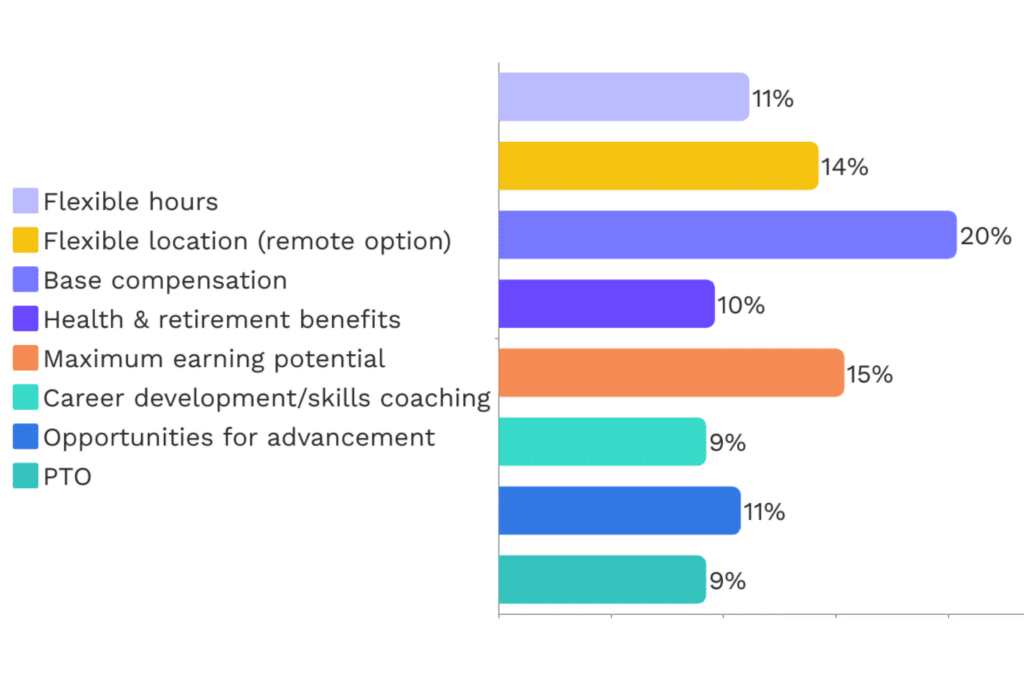
Top concern when seeking new employer
In total, 25.4% of our respondents stated flexible location (14.2%) or flexible hours (11.2%) were their top priority, edged out only by base compensation (20.38%) and maximum earning potential (15.4%).
Rounding out the top concerns for SDRs were opportunities for advancement (10.8%), health and retirement benefits (9.6%), and then PTO and skills coaching (tied at 9.2%).
While the emphasis on flexibility is undeniable, our sample tells a different story if we examine the top three considerations of respondents across our sample.
When we examined the concerns most likely to be ranked in the top three by our respondents, we found that the most frequently cited considerations were maximum earning potential, room for advancement, and skills coaching.
This finding directly aligns with assertions of the sales leaders we interviewed, each of whom emphasized the importance of a clear career path in retaining talent. “People leave for so many reasons,” said Darryl Praill. “Either I leave because I can’t be successful, or I leave because I don’t like my boss … they’re not coaching me, they’re not advocating for me. They’re not giving me a roadmap to career success and progression.”
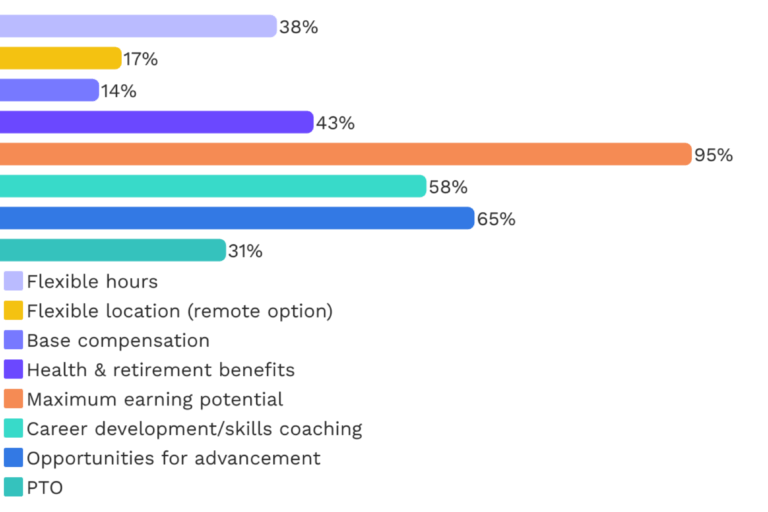
Top three concerns when seeking new employer
These two data points, when taken in unison, suggest that flexibility is an influential concern for SDRs, but such concerns don’t exist in a vacuum.
The challenge for sales leaders is to communicate the value of career progression to entry-level reps who may be recent college grads or otherwise in a state of career transition.
“A lot of companies have a career path, but it’s not very well documented,” Steve Richard said. “They need to be able to show their SDRs examples of former SDRs [who] went into other jobs.”
He extended the need for clear communication to compensation as well: “If I’m graduating college in 2023, I want to go work for a company where I see people just like me, who’ve been an SDR for 18 months, 24 months, and they’re making $100,000 a year. That’s what I want to see.”
Unless SDRs can visualize their career trajectory, the impact will always remain a future abstract that comes second to the daily concerns of flexible working hours and compensation. As such, sales leaders need to create a compelling narrative SDRs can believe in; if SDRs aren’t sold on the growth of their position, the job will remain a stepping stone to future opportunities.
The Bottom Line
Businesses and the sales professionals who scale them are adjusting their sails to today’s economic headwinds. The challenging conditions that define our new normal appear unlikely to abate (at least in the short term).
However, businesses have options to navigate the record inflation and low unemployment fueling this turnover craze.
The data uncovered through our research reinforces the strong correlation between management, performance, and retention. To improve the working conditions of their front-line SDRs, organizations should reflect on the state and strength of their managers and how they influence the trajectory of their subordinates.
Economic conditions play a major role in shaping the fortunes of businesses. But sales leaders also have considerable tools at their disposal to shape future success.
Methodology
SalesRoads conducted a five-minute online survey in January 2023 to understand how businesses are responding to a challenging hiring market spurred by high inflation and record-low unemployment. SalesRoads collected 260 responses inside sales professionals with the title of SDR or BDR. All respondents were based in the United States. Margin of error: +/- 6%.
Authors
This report was conceptualized and developed by Slingshot Content. Lead author Alex Eckhart, supporting author Flavia Farhat. Editor Toni Cirilli. Design by Alex Eckhart.
